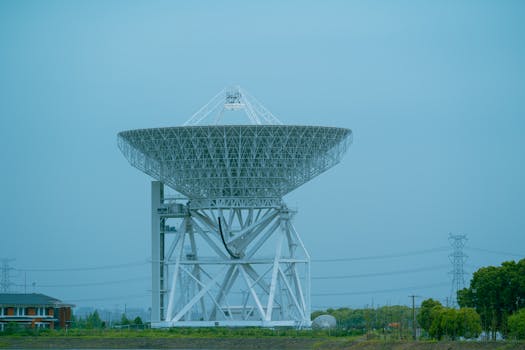
Harnessing the Skies: New Technologies Transforming Satellite Communications
Harnessing the Skies: New Technologies Transforming Satellite Communications has become a vital aspect of modern communication, providing connectivity to remote and underserved areas. With the advent of new technologies, satellite communications have undergone significant transformations, enabling faster, more reliable, and efficient connections. In this article, we will explore the latest advancements and innovations in satellite communications, and how they are revolutionizing the way we communicate.
Introduction to Satellite Communications
Satellite communications involve the use of artificial satellites in orbit around the Earth to transmit and receive data. This technology has been around for decades, but recent advancements have significantly improved its capabilities. Satellite communications offer several advantages, including global coverage, high bandwidth, and low latency. They are particularly useful in areas where traditional communication infrastructure is lacking or damaged.
Advancements in Satellite Technology
Several new technologies have transformed the field of satellite communications. One of the most significant advancements is the development of high-throughput satellites. These satellites use advanced technologies such as beamforming and frequency reuse to provide higher bandwidth and faster data transfer rates. Another important development is the use of low Earth orbit (LEO) satellites, which offer lower latency and higher throughput than traditional geostationary satellites.
Impact of New Technologies on Satellite Communications
The new technologies have had a significant impact on satellite communications, enabling new applications and services. One of the most notable examples is the development of satellite internet, which provides broadband internet access to remote and underserved areas. Satellite communications are also being used in the Internet of Things (IoT), enabling the connection of devices and sensors in remote areas. Furthermore, satellite communications are playing a critical role in disaster response and recovery, providing communication services in areas where traditional infrastructure has been damaged or destroyed.
Conclusion
In conclusion, new technologies are transforming satellite communications, enabling faster, more reliable, and efficient connections. The development of high-throughput satellites, LEO satellites, and other advanced technologies has opened up new opportunities for satellite communications, including satellite internet, IoT, and disaster response and recovery. As these technologies continue to evolve, we can expect to see even more innovative applications and services in the field of satellite communications.


